#Ystad Municipality
Photo
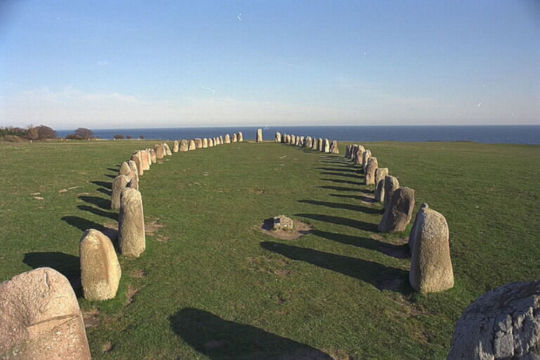
Ale's Stones
Ale’s Stones (Swedish: Ales stenar) in the Swedish municipality of Ystad in Schonen is a megalithic monument in the form of a stone ship.
Read more at: https://paganplaces.com/places/ales-stones/
0 notes
Photo






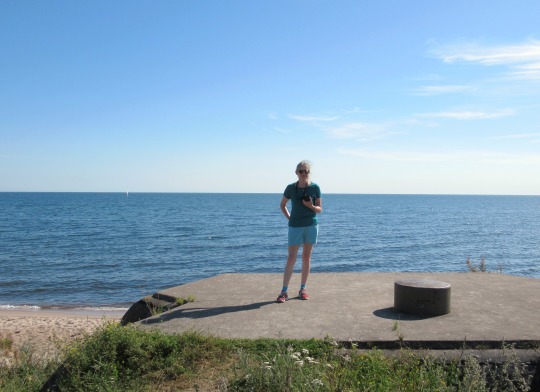



Ystad (No. 3)
Our coast stretches for more than 100 kilometres from the mouth of the river, Julebodaån, in Simrishamn Municipality to Svarte in Ystad Municipality. In the south and north there are extensive sandy beaches and between them is a variety of natural landscapes, everything from coastal meadows and wooded shore terrain to cliffs and sandstone slabs. The landscape is strikingly beautiful and harmonically interspersed with genuine fishing communities and cultural heritage beaches.
The bathing site, just east of Ystad, consists of about 1 kilometre of fine sand beach and includes five bathing jetties. Do not jump into the water from the jetties, as the water depth may vary depending on currents. It is easy to cycle here or you can take the local bus route 5 to the beach. By the bathing site is Hotell Ystad Saltsjöbad, which has a restaurant. Other facilities along the beach include cafés and other restaurants. There is also a playground in the vicinity as well as car parks. Toilets, situated by the car parks, are available from April to October. There are lifebuoys at the bathing site. Do not park your bike on Strandvägen. Bikes prevent access for emergency vehicles, which may need to use the road.
Source
#Ystad#Scania County#Baltic Sea#beach#seascape#sand#travel#vacation#summer 2020#original photography#tourist attraction#landmark#reflection#blue sky#clouds#Sweden#Sverige#Scandinavia#Northern Europe#sailing boat#ship#summer afternoon#Ostsee#cityscape#beach walk
0 notes
Photo
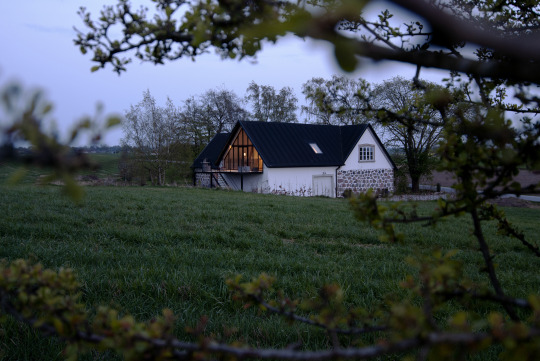









Micha van Dinther and Magnus Wittbjer’s GuestHouse,
Ystad, Ystad Municipality, Skåne County, Sweden
Photography © Mike Karlsson Lundgren for TypeO
#art#design#interiors#interior design#sweden#ystad#skane county#micha van dinther#magnus wittbjer#guesthouse#loft#luxury lifestyle#luxury house#minimalism#countryhouse#mike karlsson#typeO
278 notes
·
View notes
Text







14th April 2021 // Crown Princess Victoria and Prince Daniel continued their digital meetings with representatives of the Executive Committees of various municipalities - this time Finspång, Ystad and Olofström in the South, Bengtsfors in the West, and Nacka, Kristinehamn and Örebro in Central Sweden - where they received an update on the local response to the pandemic. The calls to Ystad and Olofström are not pictured. Since the start of 2021 they have made these unofficial calls to at least 99 municipalities, representing almost 30% of Swedish residents
9 notes
·
View notes
Photo

Lausanne Le guet, métier rempart au «monde chaotique» Toutes les nuits, un homme continue de jouer aux horloges parlantes, du haut du clocher de la cathédrale de Lausanne. «C'est le guet, il a sonné dix, il a sonné dix». Ce message, avec pour seule variation l'heure qui vient de sonner, s'élève dans la nuit lausannoise sans interruption depuis 1405. Toute l'année, entre 22 heures et 2 heures, portant lanterne et grand chapeau noir, le guet sort ainsi à chaque heure de sa guérite, située tout en haut des 153 marches de pierre usée du clocher de la cathédrale, pour servir d'horloge vivante. A l'origine, son rôle était autrement plus essentiel. Dans les villes aux maisons de bois du Moyen-Âge, le feu constituait une menace permanente: associé à un réseau de guets de terre, le guet de la cathédrale, plus haut édifice de la cité, devait donner l'alerte au plus vite. A travers l'Europe, ils étaient ainsi «des milliers voire des dizaines de milliers» à protéger les espaces urbains contre les incendies, explique Renato Häusler, l'actuel guet titulaire de Lausanne. Mais à mesure de l'avancée des progrès techniques, ils ont peu à peu disparu. Aujourd'hui, avec Lausanne, seulement six autres villes européennes ont conservé un guet actif tout au long de l'année (Annaberg, Celle, Nördlingen en Allemagne, Ripon en Grande-Bretagne, Cracovie en Pologne et Ystad en Suède). A Lausanne, alors que le guet avait également pour vocation de sonner manuellement les cloches jusqu'en 1950, l'automatisation a eu raison de cette dernière tâche. «Histoire vivante» Devenu inutile en pratique, le guet reste pourtant en fonction et «la ville est très attachée au maintien de cette tradition», assure Renato Häusler, 60 ans, guet titulaire depuis 2002, après avoir été remplaçant pendant 14 ans. «C'est une manière de rendre l'histoire vivante», explique David Payot, conseiller municipal, qui souligne également l'attachement de la population à la figure du guet. Au début des années 60, l'annonce de la réduction des horaires du guet (auparavant de 21h à l'aube) avait été interprétée comme le signe avant-coureur de sa sup https://www.instagram.com/p/BsxNCovBOEN/?utm_source=ig_tumblr_share&igshid=4rvw9dltfxw6
0 notes
Link
LAUSANNE: Every evening, the night watchman clambers to the top of the Lausanne cathedral bell tower and gets to work: he shouts out the time each hour, keeping a six-century-old tradition alive.
The night watchman, one of the last in Europe, no longer alerts this Swiss city to fires, but he does help residents to keep track of the time.
“This is the watchman! The bell has tolled 10. The bell has tolled 10.”
On a cold night in December, Marco Carrara, who takes on the job on the permanent watchman’s days off, repeats the message hourly, only changing the number of chimes that have rung.
Cupping his hands around his mouth, he allows his voice to carry across the rooftops, just as his predecessors have done every evening since 1405.
All year round, from 10:00 pm to 2:00 am, the night watchman, wearing a big black hat and carrying a lantern, steps out to the bell tower railing to serve as a living clock for the people of this picturesque city on the shores of Lake Geneva.
Changing times
The night watchman used to play a far more vital role.
Back when fire constituted a permanent threat to medieval towns and cities built in wood, he was an essential part of a network of watchmen, most of whom patrolled the streets.
From his perch, the cathedral watchman was tasked with sounding the alarm at the first whiff of smoke.
Across Europe, there were “thousands, if not tens of thousands” of watchmen protecting urban spaces from fire, said Renato Haeusler, who holds the permanent watchman position in Lausanne.
But as technology advanced, the once ubiquitous position became largely obsolete and the watchmen all but disappeared across the continent.
Today, Lausanne is one of just seven European towns or cities to have maintained the tradition of a year-round watchman, alongside Annaberg, Celle and Noerdlingen in Germany, Ripon in Britain, Krakow in Poland and Ystad in Sweden.
In Lausanne, the watchman used to be entrusted with manually ringing the bell on the hour, but in 1950, the task fell to automation.
‘Making history come alive’
Haeusler acknowledged to AFP that his position no longer served a true practical purpose.
But “the city is very attached to maintaining this tradition,” stressed the 60-year-old, who served as replacement watchman for 14 years before taking on the permanent position in 2002.
David Payot, a member of Lausanne’s municipal council, agreed.
“This is a way of making history come alive,” he told AFP.
In the early 1960s, an announcement that the night watchman’s hours would be reduced — he used to call out the time from 9:00 pm until dawn — was interpreted by many as a precursor to scrapping the post altogether.
The city was flooded with letters demanding that it maintain the job, Payot said.
Haeusler meanwhile says he likes the “out-of-sync” nature of his work — a profession serving little purpose at a time when today’s reality demands that everything be “profitable and efficient.”
‘Nobility’
Haeusler climbs the 153 worn stone steps to the top of the bell tower to announce the time about four evenings a week, for a salary he says is “well below” the going rate for nighttime work.
But he has a second job too, lighting events and soirees in the region using wax candles. He sometimes spends his hours as a watchman dipping a wick into hot wax to make the candles.
On the evenings that he doesn’t work, a replacement steps in.
“The evenings can be quiet and quite lonely,” Carrara told AFP during one of his shifts last month.
Although sometimes they can be more animated, he said, such as when “Lausanne residents, people from the region, and even tourists have the possibility to visit the watchman.”
“We are both at the heart of the city and outside of it,” he said, adding that he had been drawn to the “nobility of this task”, which runs “counter to utilitarianism”.
Between 600 and 700 people visit the tower during the evening watch each year, according to Haeusler.
‘Our roots’
From his viewpoint more than 40 metres (131 feet) above the city, the watchman can observe it change with the seasons.
“In the summer, it is magnificent. Swifts nest in the upper walkway. They are there in the evening, flying around,” Haeusler said.
He said he felt privileged to be “the last link in a chain of men (doing this job) dating back to the 15th century.”
The watchman’s permanent presence provides a kind of landmark for the residents of the city, he said.
“In a completely chaotic world, I think that it is reassuring to have activities continue for a very long time, becoming traditions, and allowing us to rediscover a few of our roots.”
The post After 600 years, night watchman still keeps vigil over Lausanne appeared first on ARYNEWS.
http://bit.ly/2REsa7l
0 notes
Photo










Ystad (No. 1)
Ystad (older Danish: Ysted) is a town and the seat of Ystad Municipality, in Scania County, Sweden. Ystad had 18,350 inhabitants in 2010. The settlement dates from the 11th century and has become a busy ferryport, local administrative centre, and tourist attraction. The detective series Wallander, created by Henning Mankell, is set primarily in Ystad.
In 1285, the town's name was written Ystath. Its original meaning is not fully understood, but the y probably is related to an old word for the yew tree, while stad means town or place.
After the time of Absalon, Bishop of Roskilde and Archbishop of Lund, peace was brought to the area in the 11th century, fishing families settled at the mouth of the river Vassa as herring fishing became the main source of trade. Ystad was not mentioned in documents until 1244, in a record of King Eric's visit to the town with his brother, Abel. A Franciscan monastery, Gråbrödraklostret, was founded in 1267, and Ystad joined the Hanseatic League in the 14th century.
The charter of 1599 gave the town the right to export oxen. Ystad, together with all of Scania, was transferred from Denmark to Sweden following the Treaty of Roskilde in 1658.
By 1866 Ystad had a railway connection and it was established as a garrison town in the 1890s. After World War II, ferry services to Poland and to the Danish island of Bornholm were opened.
Source: Wikipedia
#Scania County#Ystad#architecture#alley#cityscape#original photography#summer 2020#Sweden#Sverige#tourist attraction#landmark#old town#vacation#travel#lantern#Malvern#Scandinavia#Northern Europe#small town#timber framing
1 note
·
View note
Photo
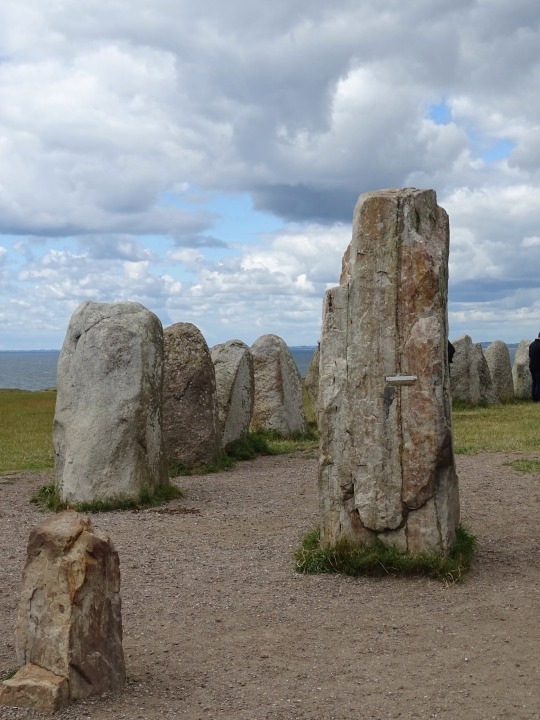

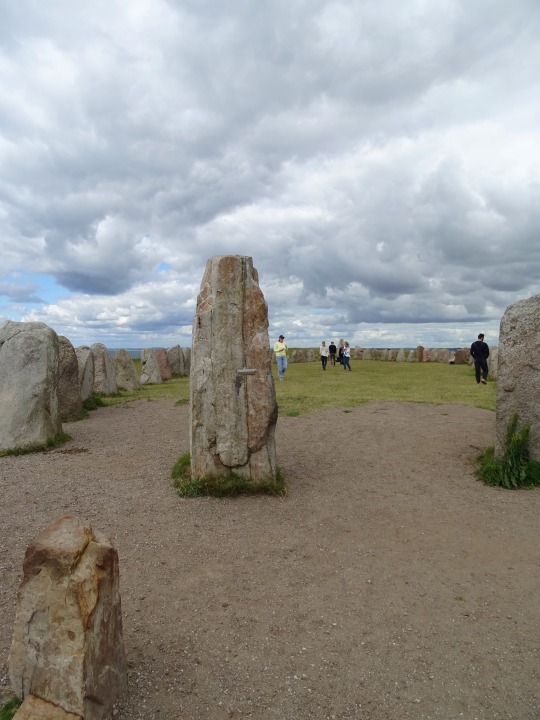



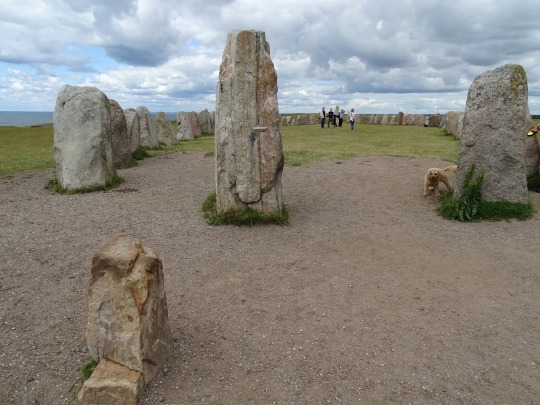

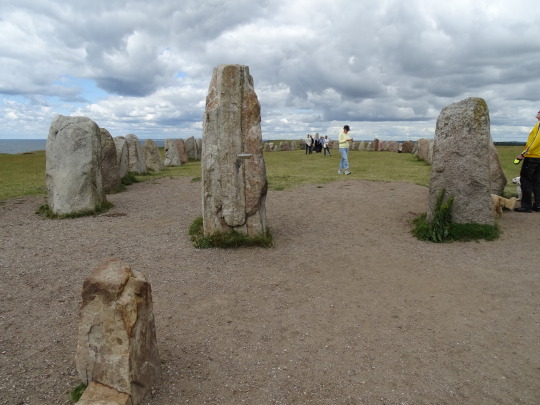
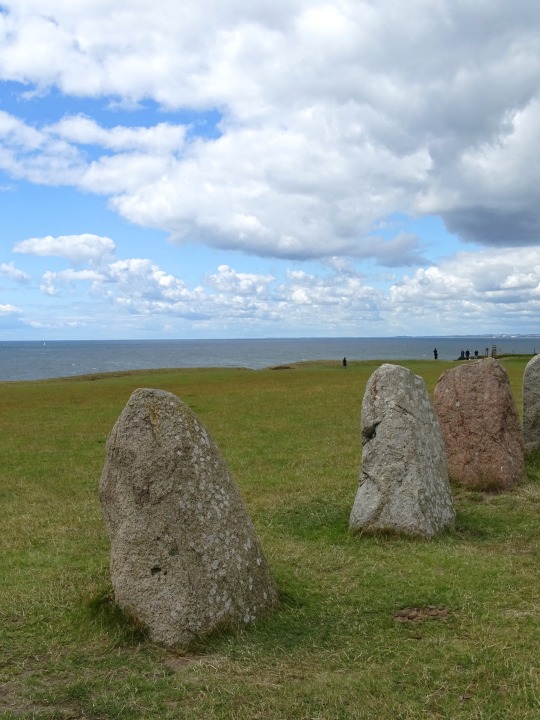
Ale's Stones, Sweden (No. 1)
Ale's Stones (Swedish: Ales stenar or Ale stenar) is a megalithic monument in Scania in southern Sweden. It is a stone ship, oval in outline, with the stones at each end markedly larger than the rest. It is 67 m (220 ft) long formed by 59 large boulders, weighing up to 5 tonnes each.
The carbon-14 dating system for organic remains has provided seven results at the site. One indicates that the material is around 5,500 years old whereas the remaining six indicate a date about 1,400 years ago. The latter is considered to be the most likely time for Ales Stenar to have been created. That would place its creation towards the end of the Nordic Iron Age.
The function and purpose of Ale's stones is much disputed and there are many different theories. It is generally believed to be a grave monument or a cult center, but another theory is that it is a sun calendar.
A theory explained by Howard Crowhurst (ACEM, Association for the Knowledge and Study of Megaliths, in France) claims that the monument is connected with summer solstice and lunar standstill.
"The Ales Stenar, known in English as the Ale's Stones, is an ancient megalithic monument of Sweden. The stones are outlining a ship. Here we show the well-known alignment of this ship along the sunset direction on summer solstice. We propose also alignments of the stones along the northern possible moonset on major and minor lunar standstills. These astronomical alignments are shown using the Photographer's Ephemeris. It is possible that this megalithic monument was used for observing the cycles of the moon."
In 1989, during the first archaeological excavations performed in order to scientifically investigate and date the monument, archaeologists found a decorated clay pot with burned human bones inside the ship setting. The bones are thought to come from a pyre and to have been placed in the pot at a later date. The pot's contents varied in age; some material was from 330–540 CE while a piece of charred food crust also found inside was determined to be from 540–650 CE. The archaeologists working on the project also found birch charcoal remains from 540–650 CE underneath an undisturbed boulder. According to the Swedish National Heritage Board, carbon-14 dating of the organic material from the site indicates that six of the samples are from around 600 CE, while one sample is from ca. 3500 BCE. The diverging sample came from soot-covered stones that are believed to be the remnants of an older hearth, found close to the ship setting. On the basis of these results, the Swedish National Heritage Board has set a suggested date of creation for Ales Stenar to 1,400 BP, which is the year 550 CE.
Source: Wikipedia
#Ale's Stones#Nordic Iron Age#Ales stenar#Ale stenar#Ystad Municipality#Scania#Skåne County#Swedish history#Baltic Sea#meadow#flora#travel#summer 2020#tourist attraction#landmark#stone ship#megalithic monument#rock#bow boulder#Sverige#Scandinavia#Northern Europe#clouds#sky#original photography#Kåseberga#Valleberga socken
10 notes
·
View notes
Photo

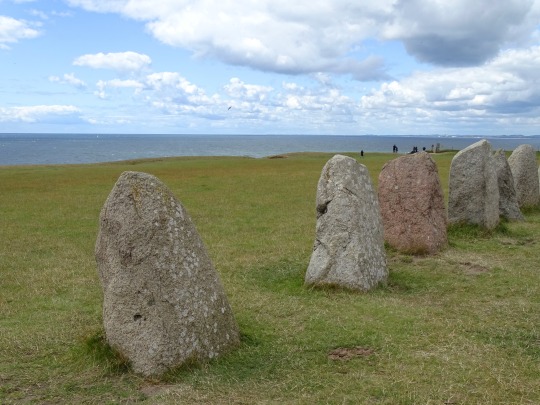
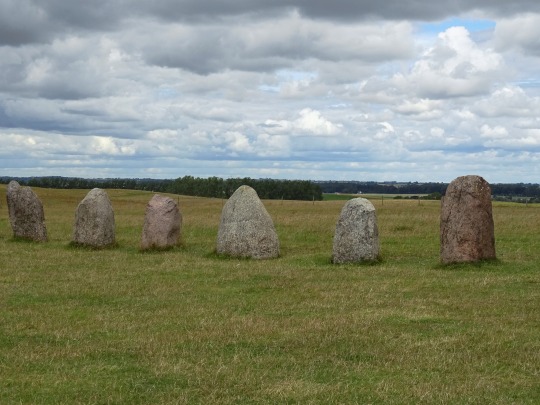


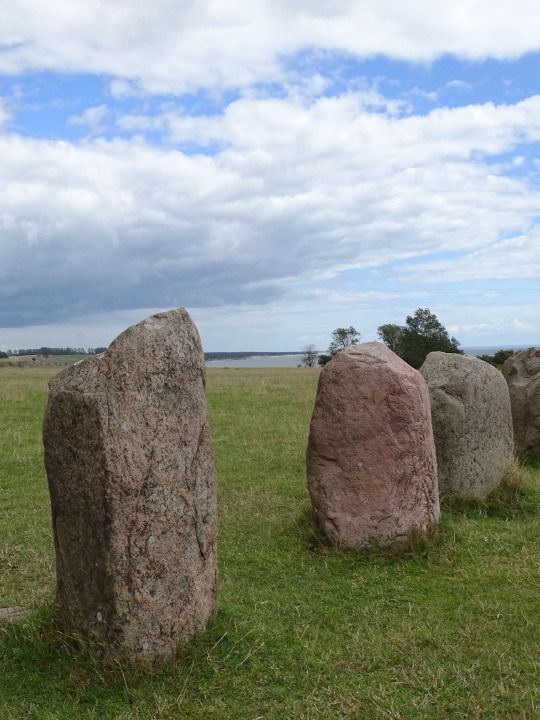
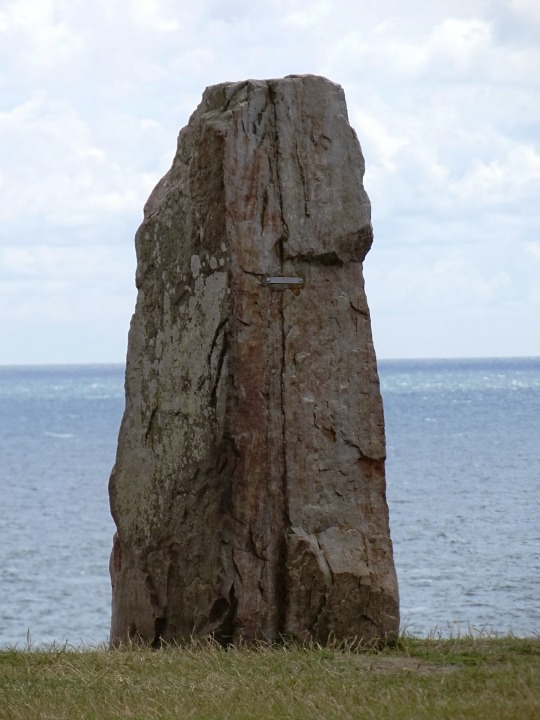



Ale's Stones, Sweden (No. 2)
SITTING LIKE A CROWN, ATOP a flat bluff in Skåne, Sweden are the Ales Stenar, an ancient formation of standing stones erected in the shape of a boat. No one is sure quite why the stone design was created but according to legend is is the resting place of a mythic king.
The Ales Stenar (Ales Stones) were placed on their Swedish cliff just 1,400 years ago, although they stand over a burial site that has been dated to 5,500 years old. There are 59 tall boulders in the formation which is made in the shape of a longship, and was possibly symbolic of a craft that would ferry the dead to their eternal fate. Beneath the boat-stones researchers have discovered the remains of an even more ancient burial chamber, sans human remains, confirming their theories as to the funerary purpose behind the ship formation, yet just who was to be buried there remains a mystery.
Legend has it that King Ale the Strong, a figure from Swedish myth, is buried under the henge, although there does not seem to be a great deal on the site to confirm this. More likely is that a lesser-known viking chieftain was buried, or meant to be buried in the spot and the stones were erected to honor his eternal memory.
Whoever the Ales Stenar were originally meant to honor, they stand now as an impressive and beautiful site that make it easy to see why someone would want to be buried there.
Source
#Ales Stenar#Ales Stones#Kåseberga#Ystad Municipality#Sweden#travel#megalithic monument#Nordic Iron Age#Scania#Skåne County#vacation#Valleberga socken#summer 2020#original photography#Baltic Sea#view#tourist attraction#landmark#bow boulder#meadow#flora#Scandinavia#Northern Europe#Ale's Stones#Swedish history#Swedish Stonehenge
3 notes
·
View notes
Photo



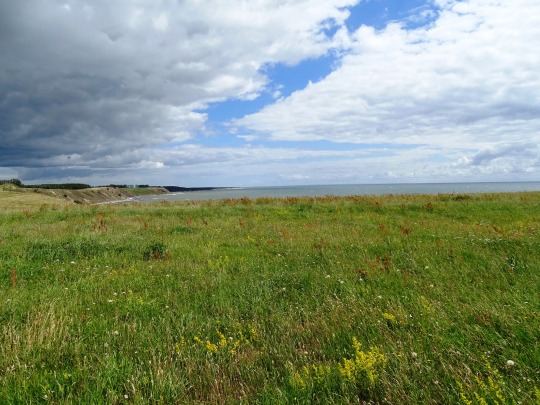






Kåseberga, Sweden (No. 2)
Ystad Municipality (Swedish: Ystads kommun) is a municipality in Skåne County in southern Sweden. Its seat is the town of Ystad. The present municipality was created in 1971 by the amalgamation of the former City of Ystad with four surrounding municipalities.
Source: Wikipedia
#Kåseberga#Skåne län#Ystad Municipality#landscape#countryside#travel#meadow#wildflower#blue sky#clouds#Baltic Sea#Ostsee#landmark#tourist attraction#original photography#Sandhammar Cliff#nature#flora#summer 2020#Sweden#Sverige#Scandinavia#Northern Europe#vacation#Southern Sweden#Valleberga
2 notes
·
View notes
Photo










Kåseberga, Sweden (No. 1)
KÅSEBERGA is a picturesque fishing village on the South coast of Österlen, with about 120 inhabitants. We welcome about 700 000 visitors every year, who visit our village with its wealth of attractions. 'The Stones of Ale', a remarkable Stone Age shipformation with its wonderful view of the Baltic Sea, is a 'must' for many. If you are looking for activities, these include paragliding, fishing, surfing, birdwatching, following a sheepherd and her dogs, visiting galleries and the many other sights in and around Kåseberga, or just have an excellent meal at one of our eateries. Whatever might attract you, you are welcome!
Source
#Kåseberga#Löderup#Ystad Municipality#Skåne County#Sweden#Sverige#cow#cattle#Baltic Sea#Ostsee#meadow#wildflower#animal#travel#Southern Sweden#Scandinavia#Northern Europe#blue sky#clouds#fence#view#Poppy#original photography#summer 2020#vacation#tourist attraction#cliff#flora#fauna#nature
2 notes
·
View notes
Photo
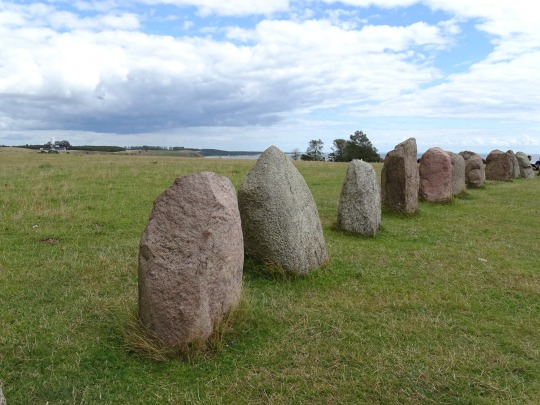


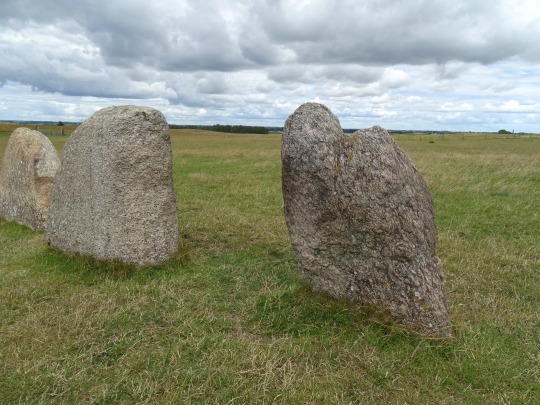

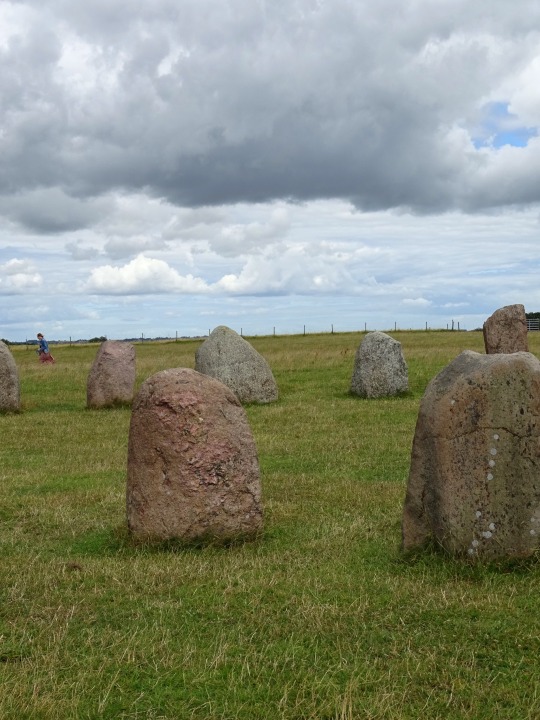

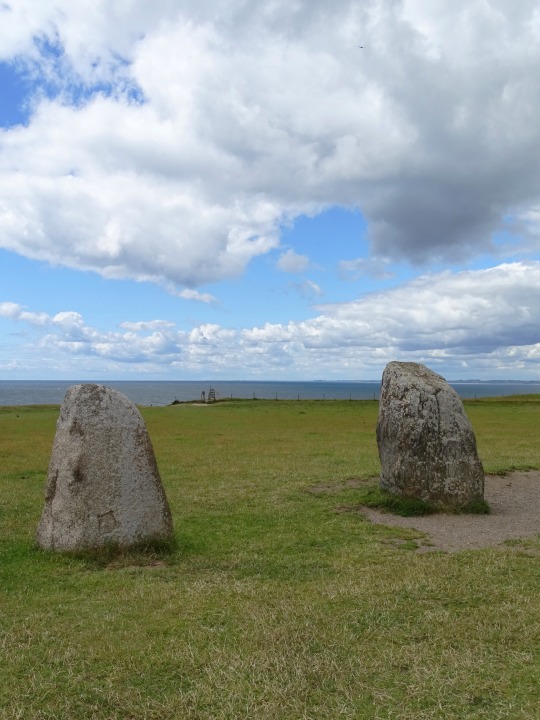

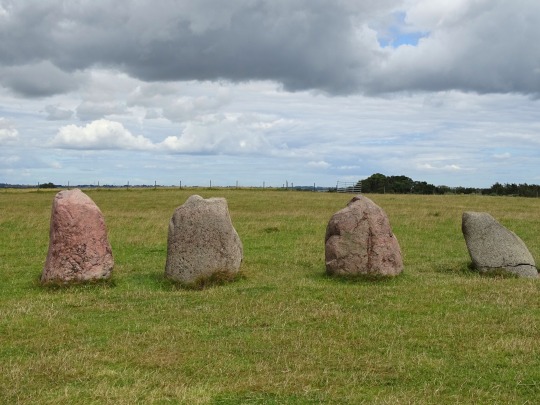
Ale’s Stones, Sweden (No. 3)
Ale’s Stones – a monolithic mystery
Ale’s stones in the hills above Kåseberga just east of Ystad is one of Sweden's most enigmatic sights. Some people believe it is a burial monument while others think it’s an ancient astronomical clock, as the stones are positioned so that the sun goes down at the north-western corner in summer and rises exactly at the opposite corner in winter.
The 59 stones are placed in the formation of a ship. They are 67 metres long and 19 metres wide at the widest point. The monument is believed to originate from the early Iron Age (500-1,000 AD).
Feel the history when you stand on the hill looking over the Baltic Sea. You’ll probably have your own theory about why these stones were placed here over 1,000 years ago. Gaze over the rolling landscape or watch the paragliders soaring through on wind through the steep hills.
Source
#Ale’s Stones#Ales stenar#Ale stenar#Ystad Municipality#Scania#Sweden#Skåne County#megalithic monument#Nordic Iron Age#tourist attraction#original photography#summer 2020#Baltic Sea#nature#flora#meadow#landmark#Valleberga socken#Killevägen#Kåseberga#stern stone#trail#fence#wildflower#blue sky#clouds#landscape#countryside#poppy
1 note
·
View note
Photo










World Soil Day
One annual celebration you might be forgiven for not participating in (or even knowing about) is World Soil Day. Yes, soil—as in that sticky brown stuff that gets walked all over your prized cream carpets. Sadly, it is our ignorance about the importance of soil and the degree to which we take advantage of all that it offers that have led to a drastic reduction in its quality the world over. These are precisely the problems World Soil Day aims to battle, as few things could be more important to us, the inhabitants of Planet Earth, who could never hope to survive without the land. Soil is one without a doubt of the most significant parts of the ecosystem, contributing to our food, water and energy and playing an important part in reducing the impact of climate change. For all of these reasons, it’s high time World Soil Day became known to more people than just scientists concerned about the welfare of our planet.
The History of World Soil Day
In 2002, the International Union of Soil Sciences (IUSS) made a resolution proposing the 5th of December be World Soil Day in order to celebrate the importance of soil as a critical component of the natural system and as a vital contributor to human well-being. 2015 was also declared to be the Internationals Year of Soils in hopes of raising as much awareness as possible about the enormous role soil plays in food security. Unsurprisingly, so far it’s mostly been the global community of 60,000 or so soil scientists who have been the ones celebrating the day the most. The chances of us ordinary folk exchanging ‘Happy Soil Day’ cards in the near future remain minimal, but that doesn’t mean we can’t learn to appreciate the important roles that soil plays in our lives (even if it is darn hard to scrub off the carpet when your nearest and dearest feline friends leave muddy footprints on their way to the kitchen).
How to Celebrate World Soil Day
The best way to celebrate this day is to do exactly what scientists the world over so badly needs to: educate ourselves. An enormous amount of damage is done to the planet every year due not to ill will, but to ignorance—many of us simply do not know enough about the earth to know when we are damaging it, sometimes irreparably. As it turns out, there are a number of things we regular people can do that can greatly help the soil we live off of remain in good condition. For example, we can plant a rain garden. For those of you who may not know what a rain garden is, it’s a shallow depression in the yard or garden rainwater can easily flow into, which helps reduce soil erosion.
It is also a good idea to reduce the amount of surfaces such as driveways and patios to a minimum, as water flowing over them gains momentum and causes more erosion than it normally would once it reaches the soil. If you absolutely must have that patio, you could consider having it built with paving stones so rainwater can flow directly downward into the soil instead. Another simple way you could go about conserving soil (and in this case, water as well) is to have a rain barrel placed somewhere where it can collect rainwater flowing off your roof, which you can then use to water your lawn. Whatever you decide to do, remember that even the smallest gestures can make a big difference to Mother Nature!
Source
#World Soil Day#Ystad#Baltic Sea#Sweden#Sverige#landscape#travel#summer 2020#countryside#original photography#Falun Mine#Ytterhogdal#Gausjosjö Sameviste Trail#Lapland#Storuman Municipality#Gamla Uppsala#Bårby borg#Öland#Agricultural Landscape of Southern Öland#Stora Alvaret#Ottenby nature reserve#Ismantorps fornborg#tourist attraction#Scandinavia#Northern Europe
2 notes
·
View notes
Photo
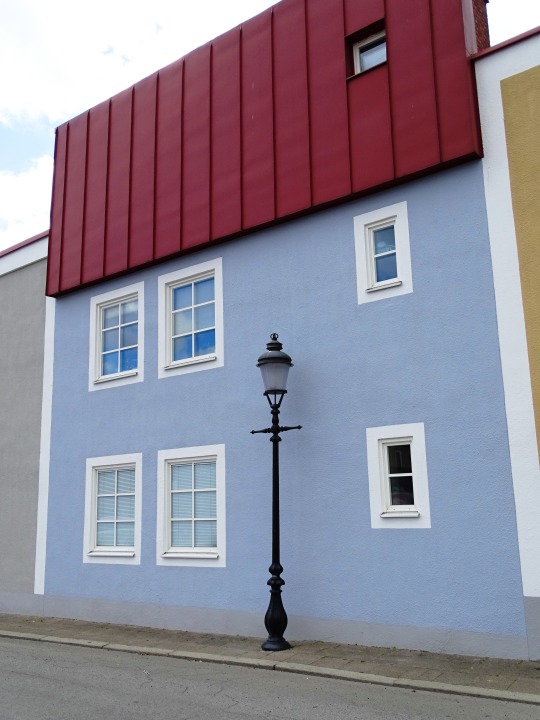

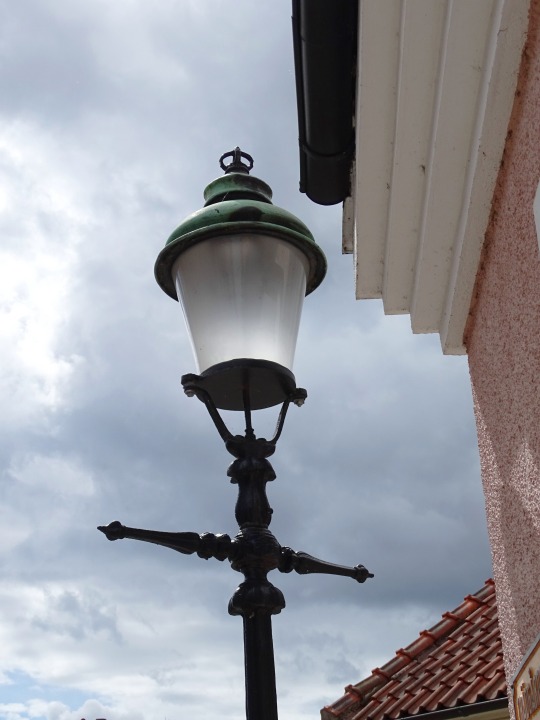


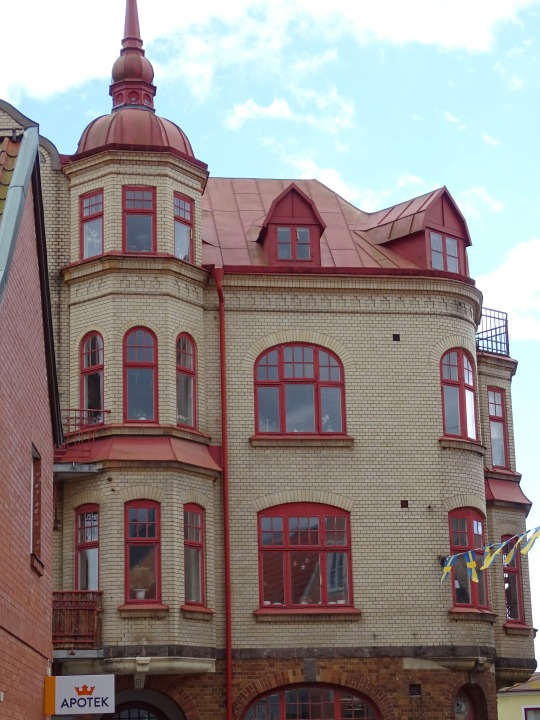
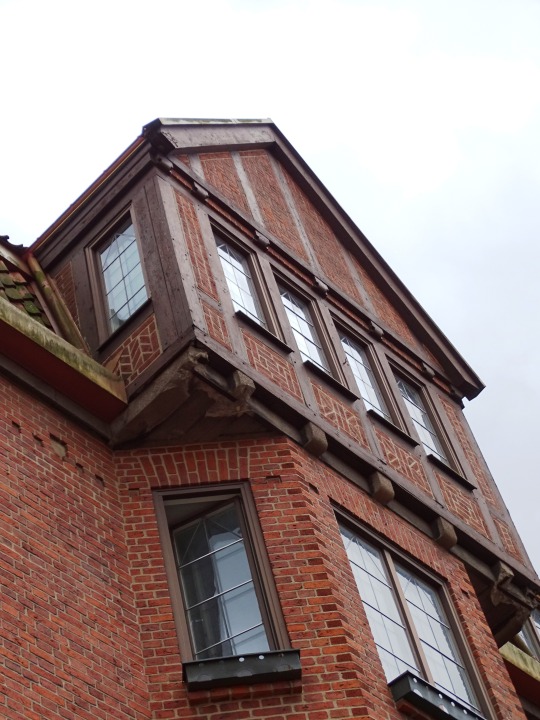


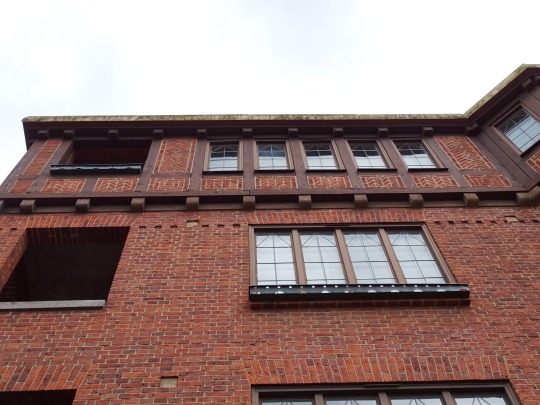
Ystad, Sweden (No. 1)
Ystad is a town and the seat of Ystad Municipality in Skåne County, Sweden. Ystad had 18,350 inhabitants in 2010. The settlement dates back to the 11th century and has become a busy ferryport, local administrative centre and tourist attraction. The detective series Wallander, created by Henning Mankell, is set primarily in Ystad.
In 1285, the town's name was written Ystath. Its original meaning is not fully understood, but the "y" is probably related to an old word for the yew tree, while -stad is town, or place.
Source: Wikipedia
#Snedgränd#Ystad#Skåne County#Scalahuset#architecture#cityscape#travel#downtown#Sweden#Sverige#summer 2020#vacation#façade#tourist attraction#landmark#Scandinavia#Northern Europe#Stora Östergatan#Pilgrändshuset#brick#window#Southern Sweden#original photography#old town#roof#street lamp#street light
1 note
·
View note
Photo

Ale's Stones
Ale’s Stones (Swedish: Ales stenar) in the Swedish municipality of Ystad in Schonen is a megalithic monument in the form of a stone ship.
Read more at: https://paganplaces.com/places/ales-stones/
2 notes
·
View notes